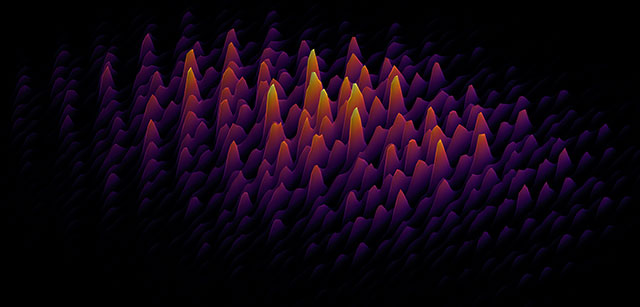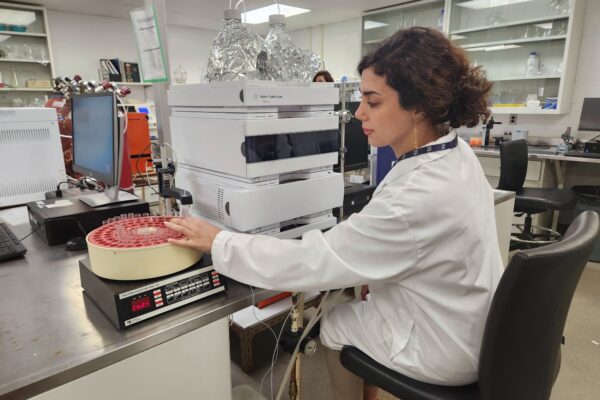- Research
On a dime-sized structure, researchers at INRS and the University of Sussex have created an optical device that uses artificial intelligence to control the properties of light.

Many technologies, including biomedical imaging systems, rely on lasers to produce light that has properties tailored to a particular application. Optical systems make it possible to shape and control the characteristics of laser light, but with certain limitations for the user. Today, researchers are able to miniaturize optical tools and assemble them on what is known as an optical chip. No bigger than a fingertip, optical chips are like an obstacle course for the light that passes through them, changing its properties in the process. Improvements in optical chip design, as unveiled by Professor Roberto Morandotti and an international research team in a recently published article in Nature Communications, open the door to a wealth of new scientific and technological possibilities.
Scientists are constantly seeking ways to gain more control over lasers, be it in terms of laser pulse duration, shape colour, or other advanced parameters; every controllable characteristic opens up a range of new application opportunities. Until now, however, control has been limited to certain pulse characteristics and has required expensive and cumbersome devices that are not easily scalable.
Many theoretical proposals have been made in view of overcoming these limitations. One of these involves the use of combined light pulses. Unfortunately, there is a significant operational obstacle to using combined pulses efficiently: the number of possible combinations is simply too high and too complex to be dealt with by means of a conventional numerical or experimental approach.
Despite this formidable obstacle, this avenue of research holds too much potential to be ignored. Capitalizing on the versatility, stability, and unique properties of the miniature optical systems—i.e., integrated optical chips—developed at INRS by Professor Morandotti and his team, Benjamin Wetzel, the article’s lead author, has developed a way to divide and recombine laser pulses and thus control their individual characteristics in a unique way. In doing so, he has opened up a whole new range of possibilities.
“Using this conceptually simple approach, we have the possibility of exponentially expanding the possible combinations of system parameters we can control. By modifying a handful of variables on the chip, we can obtain more than 1036 pulse shape configurations to control our optical system—more than the estimated number of stars in the universe.”
Benjamin Wetzel
These astronomical numbers illustrate the hurdle represented by the computing power requirements this approach entails. To surmount it, the international team turned to artificial intelligence. An automatic learning algorithm was used to help determine the best parameter combinations for obtaining precisely the type of light desired.
For the purposes of the study and as proof of concept, light was manipulated to obtain supercontinua. These are extended light spectra obtained from intense interactions between light and matter; they are now used in many technological applications. As the results published in Nature Communications demonstrate, the integrated optical chip used in conjunction with the learning algorithm produces an optimal pulse pattern that provides researchers with the complex physical dynamics they require.
These exciting results will have an impact in numerous areas of basic and applied research, as many of the optical systems currently in use depend on the same phenomena as those deployed for supercontinuum generation. In addition, the proposed system is inexpensive and highly compact and can be scaled into more complex systems.
The international research team’s work could lead to the development of other intelligent optical systems using self-optimization techniques. These include the control of optical frequency combs (Nobel Prize 2005) for metrology applications, self-adjusting lasers, pulse processing and amplification (Nobel Prize 2018), as well as the execution of more fundamental approaches to intelligent learning such as systems based on photonic neural networks.




